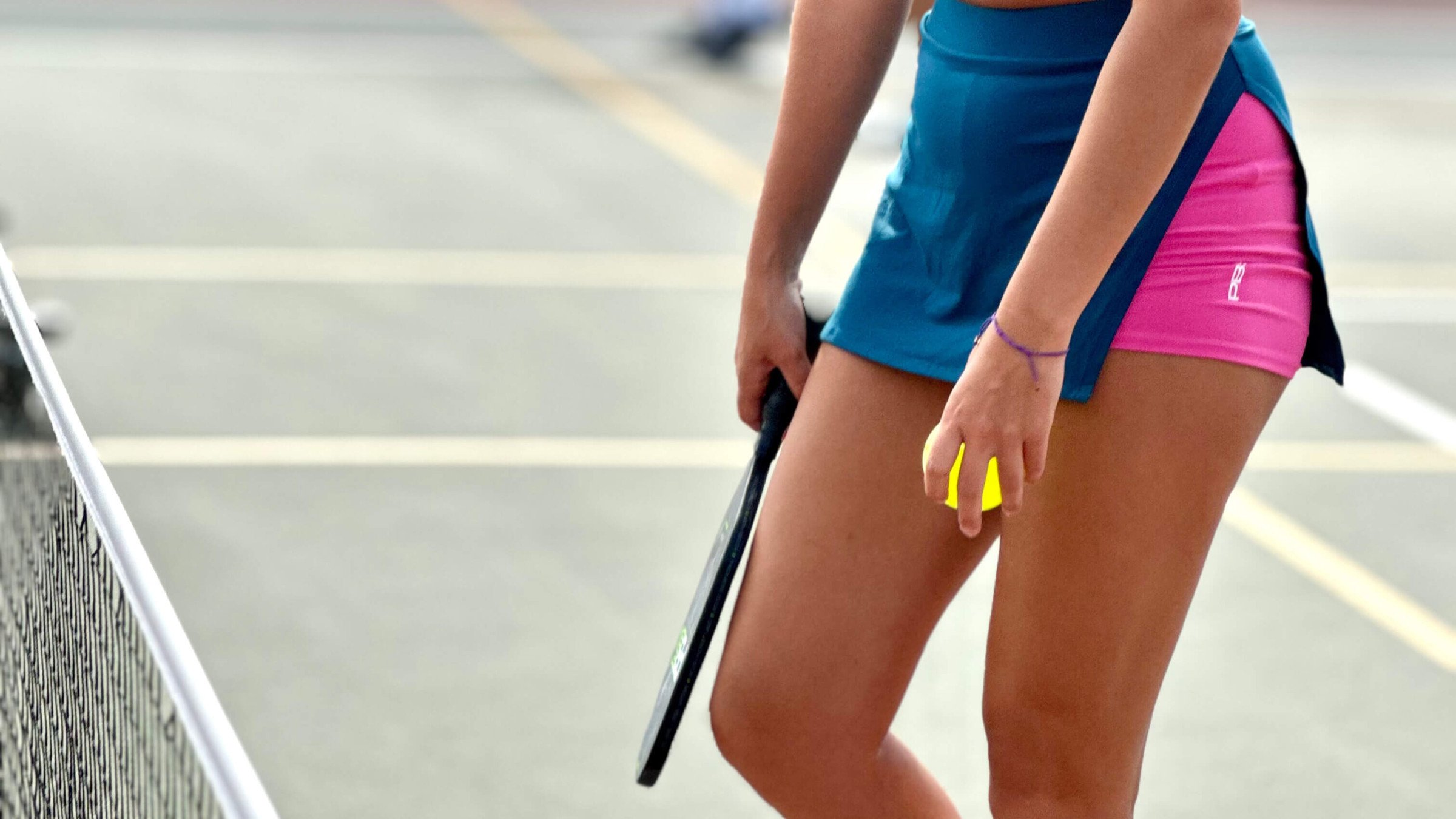Key takeaways:
Switching hands in pickleball is legal and enhances strategic play, offering unique offensive and defensive advantages.
Mastering ambidextrous techniques in pickleball can turn ordinary matches into tactical opportunities, giving players a competitive edge.
PB5star's gear perfectly complements dynamic techniques like hand-switching, providing players with freedom of movement and stylish flair on the court.
Switching hands during pickleball is not only completely legal but can also give you a fun edge on the court! While most players stick with their dominant hand, getting comfortable with both hands can open up your game. This nifty skill helps you reach those tricky shots and keeps you better positioned when the action heats up.
Getting the hang of playing with both hands does take some practice, but the payoff is worth it! This easy-to-follow guide from PB5star breaks down hand-switching into simple, manageable steps that anyone can master. With clear instructions for basic grip techniques and fun drills to build your confidence.
Learn the rules of hand-switching
So, can you switch hands in pickleball? Unlike some sports that restrict how you can handle equipment, pickleball offers remarkable flexibility regarding paddle handling. The official USA Pickleball rulebook does not mention restrictions regarding hand-switching during gameplay. During a rally, you can transfer your paddle between your right and left hands as often as needed. This applies to all situations on the court, whether you're:
Serving from the baseline
Returning a deep shot
Handling quick exchanges at the kitchen line
Reaching for a wide ball
Transitioning between forehand and backhand positions
This flexibility with grip and hand position is one of the reasons pickleball is so approachable while still offering plenty of strategic depth. Even the pros will switch hands now and then to reach those tricky shots or throw their opponents a curveball.
If you're new to the game, don't worry about trying to use both hands right away. It's totally fine to stick with your dominant hand while you get comfortable with the basics. As you grow more confident, try experimenting with the occasional hand switch to add some variety to your game. Just remember, while the rules allow you to switch hands freely, the real challenge is keeping control during that transfer—that's what separates successful shots from unforced errors.
Benefits of playing with both hands
Learning to use both hands effectively isn't just a flashy skill. This skill opens new dimensions and levels up your game in ways that might surprise you.
Enhanced tactical flexibility - Switching between dominant and non-dominant hands allows you to handle awkward shots without compromising your stance or balance.
Expanded court coverage - Rather than scrambling to position your dominant hand, you can use your other hand to maintain better court positioning and conserve valuable energy.
Improved kitchen line play - Ambidextrous skills are particularly valuable during fast-paced exchanges at the kitchen line (the non-volley zone 7 feet from the net).
Reduced injury risk - Distributing the workload between both arms decreases strain on your dominant shoulder, elbow, and wrist, potentially extending your playing career.
Shorter recovery time - Using both hands helps prevent overusing your dominant side, allowing quicker recovery between games and matches.
Unpredictable gameplay - Opponents who can't anticipate which hand you'll use next will struggle to position themselves effectively, giving you a strategic advantage.
Develop your ambidextrous skills
Mastering the ability to use both hands can give you a competitive edge and expand your range on the court. These techniques will help you become more versatile on the court and improve your overall gameplay:
Perfect your paddle control using the continental grip method. This versatile hold (where your hand positions as if you're shaking hands with the paddle) sets you up for smooth paddle transfers and maintains control during quick exchanges.
Turn solo time into skill-building gold with wall drills. Start with controlled volleys, ramping up your speed as confidence grows. Mix in paddle transfers between hits to develop natural transitions.
Team up with a practice buddy for volley exchanges. Take turns alternating paddle hands during short-distance rallies. This playful drill builds quick reflexes and creates opportunities for friendly competition.
Level up your footwork by combining side steps with paddle transfers. Move laterally across the court while maintaining a strong, athletic stance - perfect for those unexpected plays that demand quick adaptation.
Put some rhythm in your routine by practicing to music. A steady beat helps sync your movements, making training sessions fun and engaging.
FAQs on hand-switching in pickleball
Whether you want to expand your defensive range or add versatility to your play style, mastering this technique starts with understanding the fundamentals. Here are the answers to your most common questions about this game-changing skill.
What advantages come with hand-switching?
Hand-switching expands your reach and keeps opponents guessing. While it takes practice to master the smooth transfer of your paddle between hands during fast-paced play, the benefits are worth the effort—you'll cover more court without scrambling, protect your dominant arm from overuse, and turn defensive scrambles into offensive opportunities.
What are the optimal situations for switching hands during play?
Switch hands when defending against wide shots beyond your dominant side's reach or during fast-paced exchanges where quick adaptability gives you an edge. Many players in our community also use hand-switching to stay active on the court while managing minor injuries.
How can I develop confident hand-switching skills?
Begin with controlled training sessions focusing on proper grip transitions - start with a continental grip and practice smooth transfers between hands. During casual games, incorporate hand-switching drills into your warm-up routine, focusing on cross-court dinks and gentle volleys.
Which common missteps should I watch out for?
Players often rush the hand switch without proper positioning, leading to weak returns. Keep your feet active and balanced during the transition, and remember that a well-executed traditional shot usually beats a rushed hand-switch attempt.
How does hand-switching improve overall athletic ability?
Regular practice of hand-switching enhances hand-eye coordination and builds total body awareness. This skill develops neural pathways that benefit your overall game, improving reaction time and spatial awareness on both sides of your body.
Power up your pickleball game with PB5star
Switching hands in pickleball boosts both your defense and offense on the court. This move helps you cover more ground, keeps your dominant arm from getting overworked, and throws opponents off their game when they can't predict which hand you'll use next. Though it takes some practice to get comfortable with both hands, developing this skill can turn your regular pickleball matches into exciting displays of versatility and smart strategy.
When learning new skills like hand-switching, your gear should work as hard as you do! Visit PB5star and check out some of our products that would help you bring your A-game.






